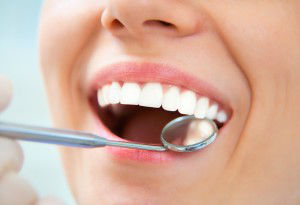
Vitamin D plays an important role in our health, with its major function to help maintain normal blood levels of calcium and phosphorus. It helps the body to absorb calcium, which forms and maintains strong bones and may also protect against a number of diseases like osteoporosis, high blood pressure and cancer.
While many people are aware that calcium helps to build strong bones and teeth, most don’t realize the important relationship vitamin D has with dental health. If we don’t get enough in childhood, bone deformities can develop, and if we don’t get enough as adults, it can lead to reduced bone density, osteoporosis, increased risk of bone fractures and poor oral health.
A number of studies have linked geographical variations in dental health and tooth loss to sun exposure. People living in the sunnier western region of the US were found to have half as many cavities as those in the much less sunny northeast.
The Vitamin D Council reports that the “use of vitamin D appears to be a better option for reducing dental cavities than fluoridation of community water supplies, as there are many additional health benefits of vitamin D and a number of adverse effects of water fluoridation such as fluorosis (mottling) of teeth and bones.” Fluoride consumption is linked to a long list of other health issues, as well.
Without enough sunshine the body is not able to produce enough vitamin D. Higher levels of vitamin D help combat inflammation, so without adequate levels our heart health may suffer. Chronic inflammation plays a major role in the buildup of plaque in the arteries, which can lead to a heart attack.
Vitamin D is also known to protect against cancer in a number of ways, including reducing the spread and reproduction of cancer cells and increasing the self-destruction of mutated cells.
There are a number of factors that can cause vitamin D deficiency, but limited exposure to sunlight is the number one reason so many Americans are deficient in vitamin D today. People who live at latitudes above 37 degrees north or below 37 degrees south of the equator aren’t getting enough UVB energy to make all the vitamin D needed for the body to properly function. This is also true for the many people that spend most of their time indoors, as well as those who purposely avoid the sun and use sunscreens to protect the skin from harmful UV rays.
So what do you do to make sure you get enough vitamin D, given that we’ve all been told for years just how dangerous it is to spend time in the sun – and when we do, that we absolutely must lather on the sunscreen?
The reality is that the dangers of the sun may have been overemphasized, while the benefits have been minimized. While you shouldn’t spend hours in the sun without protection, a little can go a long way. Spending at least a few minutes in the sunshine each day can help your body produce vitamin D.
Exercising outdoors is a great way to increase your vitamin D levels, particularly if you can get out for about a half hour between the hours of 11 a.m. and 3 p.m. If you’re going out in the sun after being indoors all winter and your skin is pale, limit yourself to about 15 minutes during this same period and slowly work your way up to longer exposure times.
 If you burn easily, you may want to limit your time in the sun to just a few minutes each day until your skin begins to slightly darken, building up to 30 minutes daily. If you have to be out in the sun for an extended period, use an SPF 15 non-toxic sunscreen.
If you burn easily, you may want to limit your time in the sun to just a few minutes each day until your skin begins to slightly darken, building up to 30 minutes daily. If you have to be out in the sun for an extended period, use an SPF 15 non-toxic sunscreen.
Those who live in a northerly climate may need to take a high quality vitamin D supplement during the winter months.
The bottom line is that the sun is necessary for life – without it, life on this planet would cease to exist. We need sunlight to thrive – just not in heavy doses.
-The Alternative Daily
Sources:
http://www.health.harvard.edu/newsweek/vitamin-d-and-your-health.htm
http://articles.mercola.com/sites/articles/archive/2011/10/24/vitamin-d-may-be-better-than-fluoride.aspx
http://www.thealternativedaily.com/1-worst-sunscreen-avoid-costs

